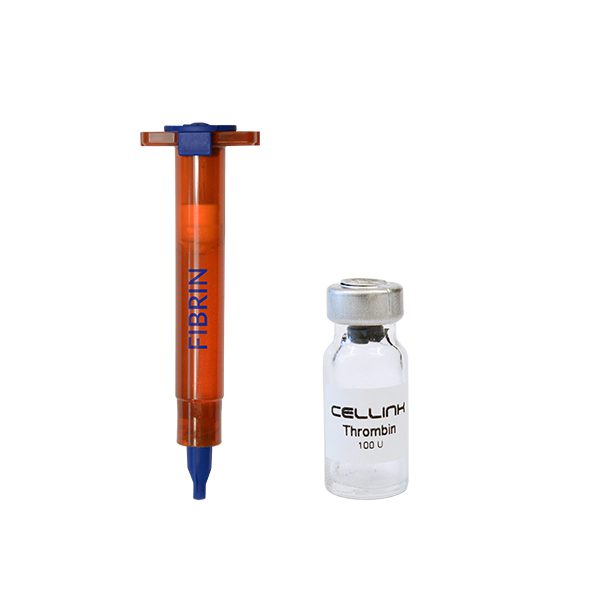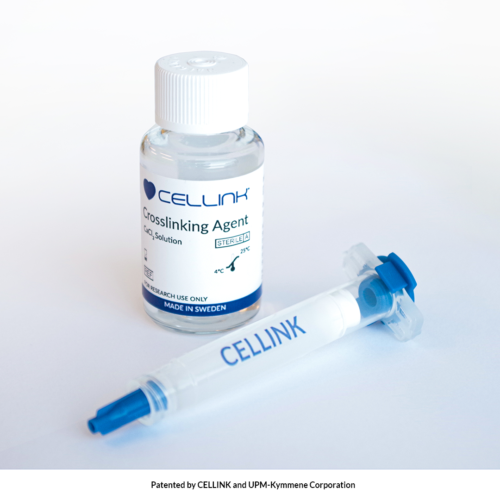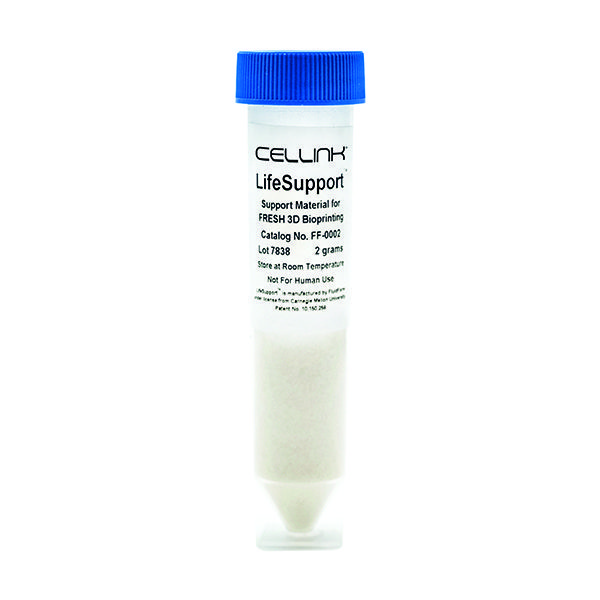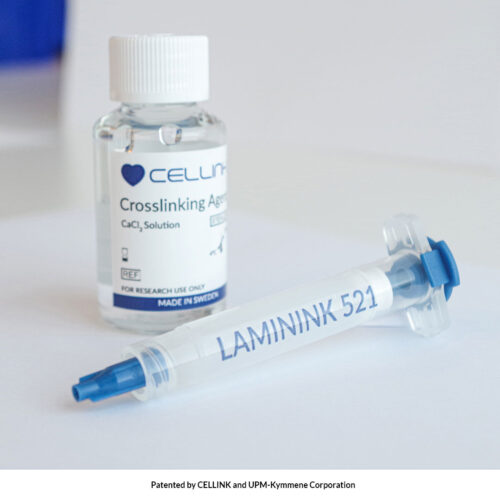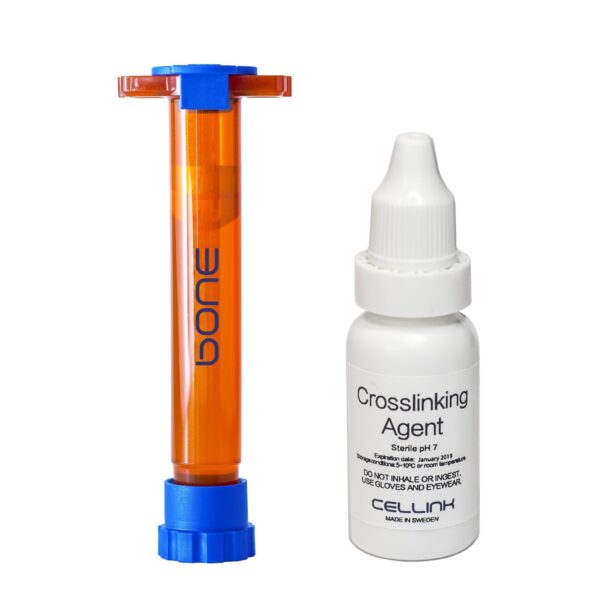Description
These nanosized fibrils make the bioink semi-translucent which allows cell imaging and analysis. Additionally, this bioink includes fibrinogen that is converted into a fibrin network with thrombin-containing crosslinking solution after printing. This in situ fibrin protein network provides a physiologically relevant wound-healing environment that mimics blood clotting and supports vascularization.
CELLINK FIBRIN contains low levels of endotoxins that allows creation of healthy and diseased tissue models with minimal interference with drugs during drug discovery and development research.
- Shelf life: minimum 3 months.
- Storage conditions: 2-10°C, do not freeze.
- Includes CaCl2 Crosslinking Agent and thrombin.
- For research use only. Not for human use.
Specifications
| Appearance | White semi-translucent gel |
| Sterility | Sterile |
| Endotoxin level | <5 EU/mL |
| pH | 6.5-7.4 |
| Viscosity | 2.6-7.5 kPa∙s at 0.01 s-1; 1.0-1.9 Pa∙s at 200 s-1 |
Publications
3D Co-Printing and Substrate Geometry Influence the Differentiation of C2C12 Skeletal Myoblasts
Loi, G; Scocozza, F; Aliberti, F; Rinvenuto, L; Cidonio, G; Marchesi, N; Benedetti, L; Ceccarelli, G; Conti, M. Gels (Basel, Switzerland), 9(7), 595. (2023)
https://doi.org/10.3390/gels9070595
Myoblast 3D bioprinting to burst in vitro skeletal muscle differentiation
Ronzoni, FL; Aliberti, F; Scocozza, F; Benedetti, L; Auricchio, F; Sampaolesi, M; Cusella, G; Redwan, IN; Ceccarelli, G; Conti, M. Journal of Tissue Engineering and Regenerative Medicine, 16(5), 484–495. (2022)
https://doi.org/10.1002/term.3293
Printing support hydrogels for creating vascular‑like structures in stacked cell sheets
Tanaka, R. I; Sakaguchi, K; Umezu, S. Artificial Life and Robotics, 25(2), 199–203. (2020)
https://doi.org/10.1007/s10015-020-00605-7


